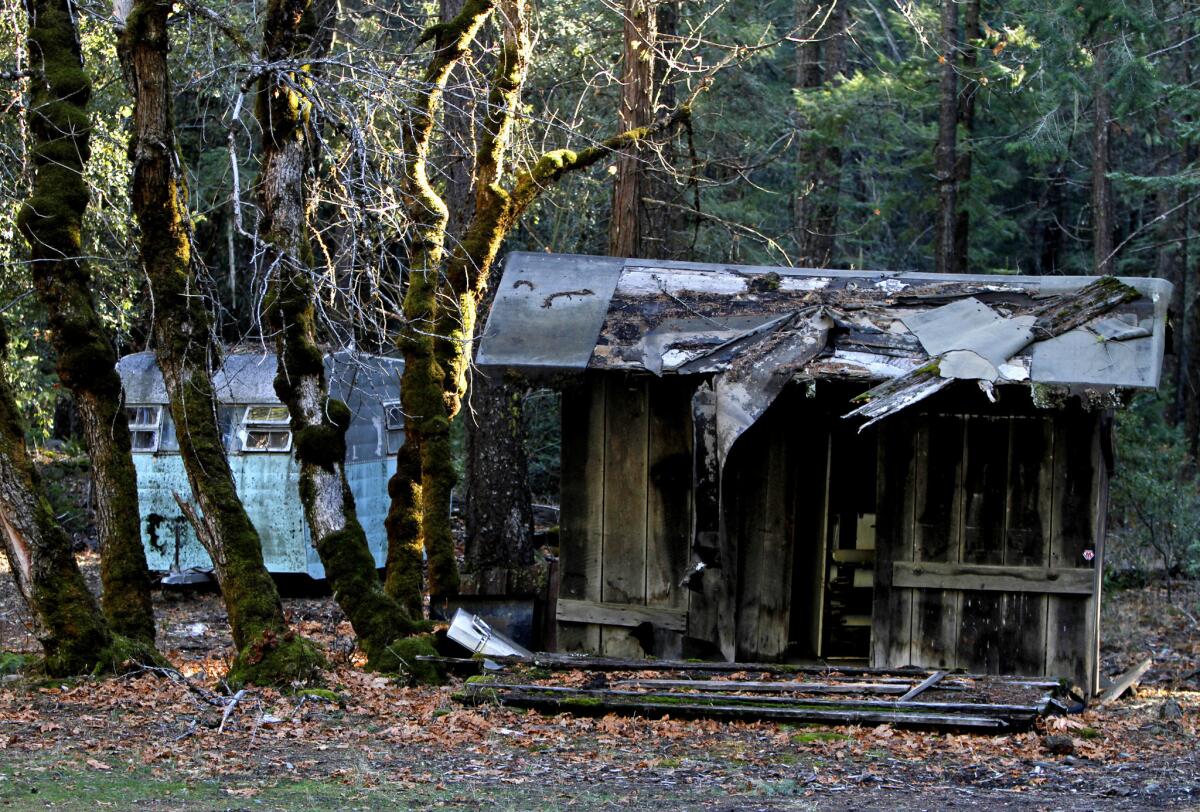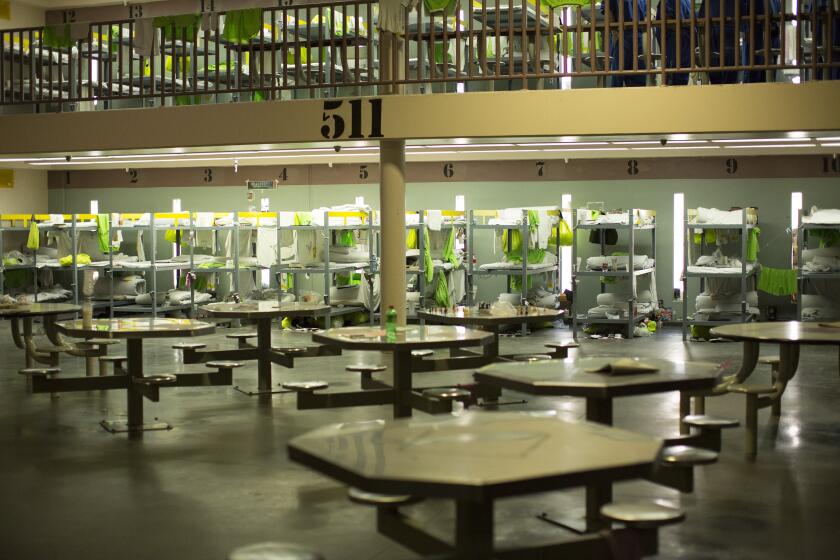Craftsmen use traditional skills to restore Korean Friendship Bell
A gift from South Korea for the U.S. Bicentennial, the huge Korean Friendship Bell had accumulated rust and was tagged with graffiti. But L.A. had neither the money nor skill to repair it.
- Share via
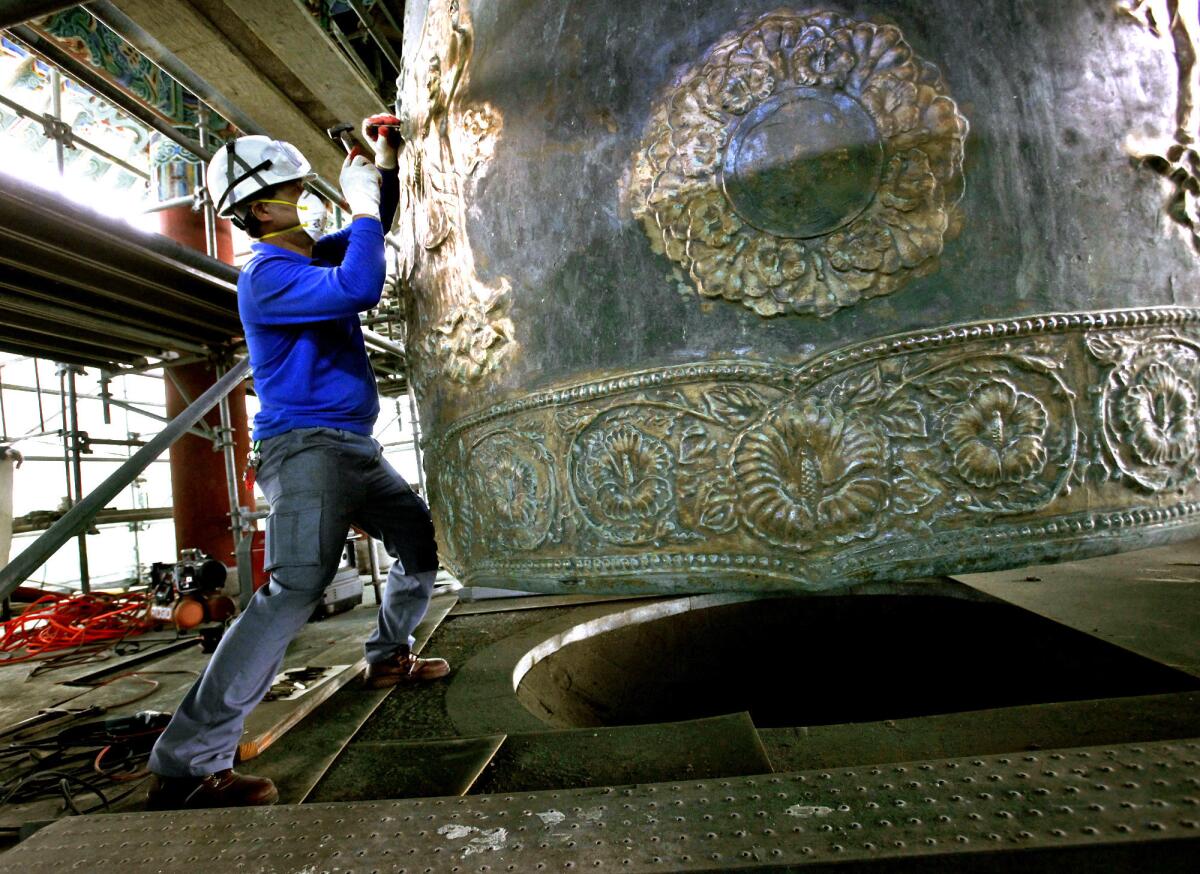
Chai Dong-hey is sandwiched between scaffolding and a 17-ton bronze bell on a bluff overlooking the Pacific Ocean. The white mask covering his mouth and nose pokes out just inches from tarnished metal.
His arm cocked at an 80-degree angle, the South Korean bell-master maneuvers a chisel into a crevice in an engraving of the Statue of Liberty on the bell. Then he draws out a small hammer — ready to carve out rust 37 years in the making.
Tap, tap, tap.
The bell issues a soft musical reply.
Gong, gong, gong.
Around him, other workers take buffers to the bell under the watchful eye of a foreman. By the midmorning, city workers back in a truck to remove bags full of waste, and at noon, the team retires for a simple lunch of barley rice.
After the break, Chai spreads his selection of small picks across a white cloth on the scaffolding. As he chips away at the edges of a rose, rusty brown gives way to glowing bronze.
Nearly 40 years ago, Chai's mentor spent months casting the Korean Friendship Bell at the behest of the South Korean government and sent it to San Pedro as a present for the United States' 200th birthday.
Now Chai is helping to rescue it.
"My teacher always spoke of this bell as a child he had given up for adoption. He was always concerned about its well-being, but there wasn't much he could do, because it was so far away," Chai says through a translator. "I always wanted to come here."

The bell may not be well known in Los Angeles, but some Koreans consider it a West Coast Statue of Liberty — a symbol of the strong ties between the U.S. and Korea.
Then-South Korean President Park Chung-hee wanted the gift to be something special; his government spent more than $1 million to cast the bell, formally known as the Bell of Friendship, and build it a proper house.
He had it modeled after a famous Korean bell that dated from A.D. 771. Back then, bells were considered technological wonders that had the power to restore peace, tranquillity and healing to those who heard them.
A Korean bell doesn't curve outward, instead dipping almost straight down like a dome to keep the sounds resonating within. A bowl placed underneath reflects sound back into the bell and through a hole ornamented by a dragon, which funnels the bell's sound out a pipe at the top. The features allow Korean bells to be heard miles and miles away.
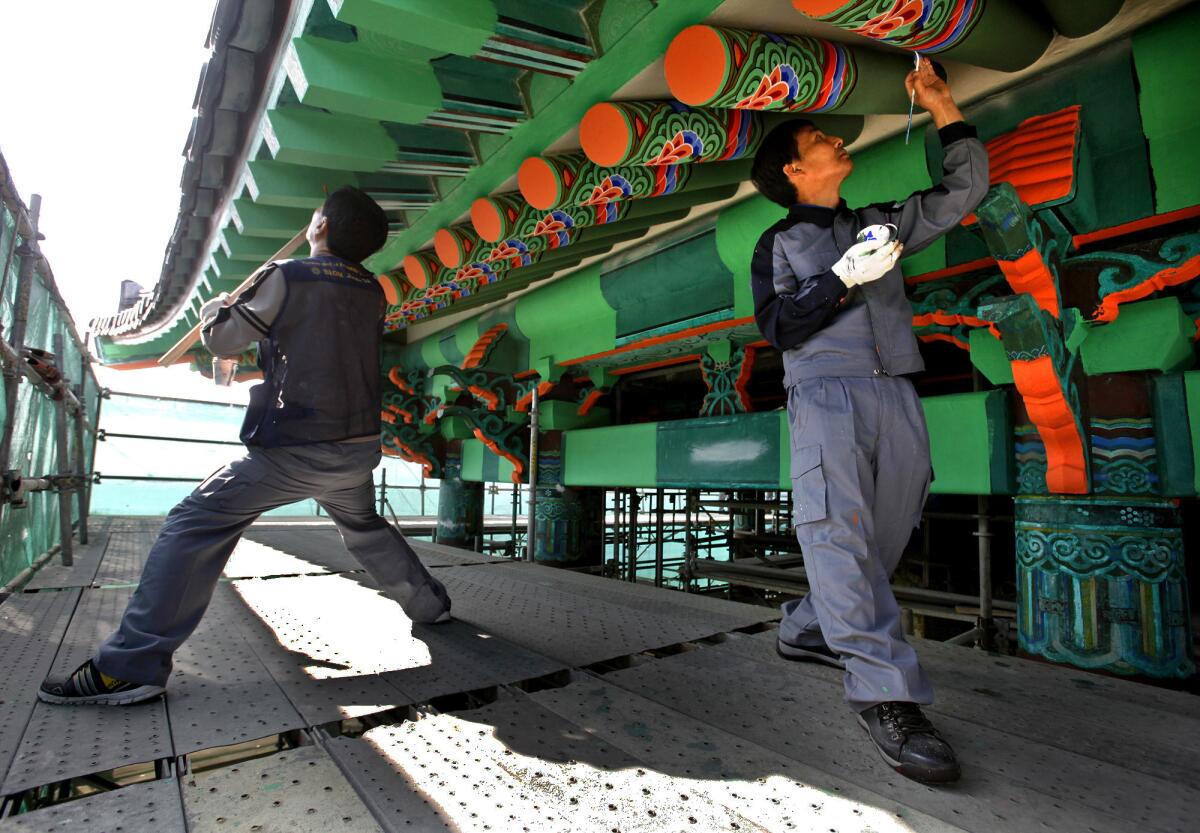
A crew of Korean painters works on the bell's pagoda. More photos
Four Korean goddesses — holding symbols for peace and victory, the South Korean flag and the national flower — are engraved in relief onto the bell, and each is paired with a goddess resembling the Statue of Liberty. Roses in bloom form a circle around the base.
Traditionally, the bell has been rung five times a year: for Korean Liberation Day, U.S. Constitution Day, Korean American Day, the Fourth of July and New Year's Eve.
But in recent years, it has fallen into disrepair. A chunk of the link that attaches the bell to its house fell off during a bell-ringing ceremony in 2010, causing the object to sag and twist inside its pavilion. Bird excrement lined the belfry. The concrete of the once-colorful pagoda was chipped. A vandal covered the inside of the bell with graffiti.
The city of Los Angeles had neither the money nor the expertise to fix it, so the Korean Ministry of Culture, Sports and Tourism paid more than $300,000 to replace the link and hire the experts who could bring the bell back to life.
The artists say that they are among a handful of metallurgists with the experience necessary to repair a bell of this size. And because Chai's company cast the bell, his technicians approach the repairs with a sense of duty.
"When this bell was cast, Korea was still among the poorer countries in the world," Chai, 51, says. "So for them to aspire to make the largest bell ever cast in Korean history … that was a giant project."

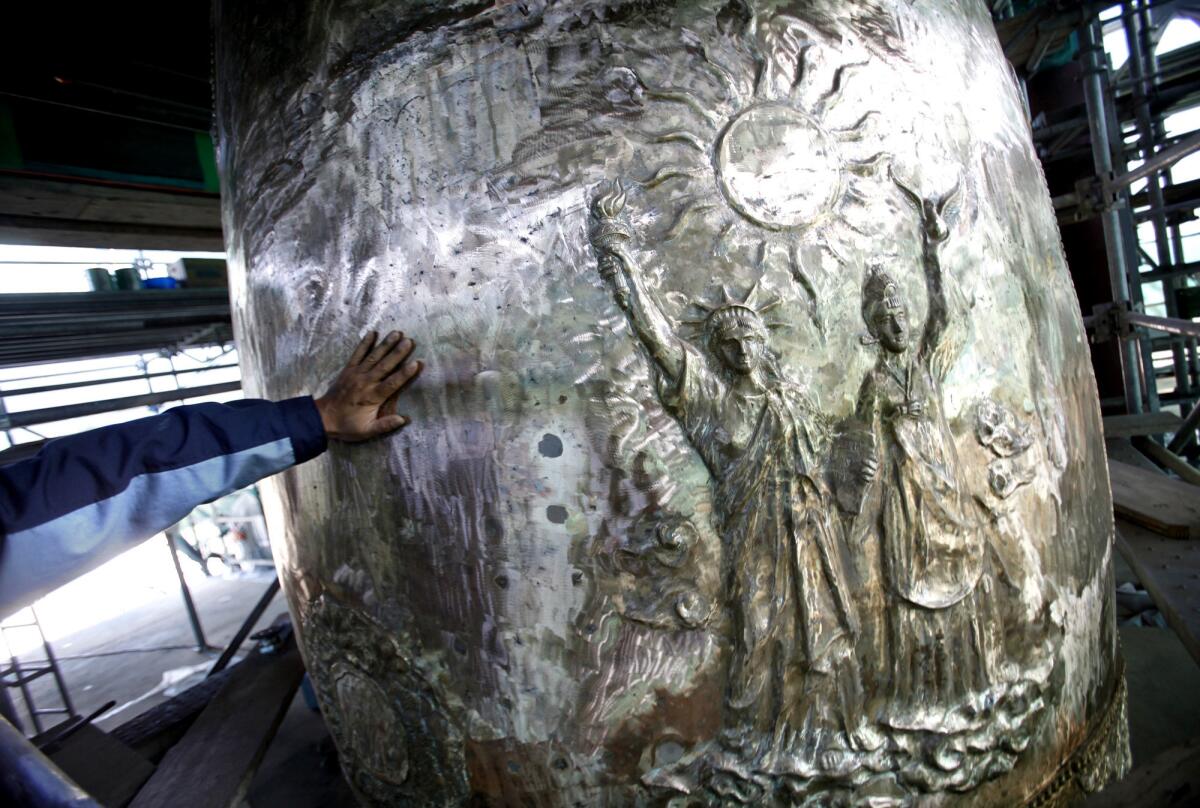
Byung-Hwi Cho reaches out to touch the polished Korean Friendship Bell. More photos
Ernest Lee was just a kid when his aunt first took him to see the Korean Friendship Bell in Angels Gate Park. He recalls his joy at being able to read the inscription in his native tongue:
"May this bell ring and sound forth the hope and resolve of our two nations in their common devotion to enduring prosperity, liberty and peace."
By 2006, Lee had moved to Torrance and often passed the bell. The telecommunications entrepreneur quickly realized that it had fallen into disrepair. So he banded together with some high school friends, joined forces with another Korean advocacy group and formed the Korean Friendship Bell Preservation Committee.
May this bell ring and sound forth the hope and resolve of our two nations."
The nonprofit group started running the bell-ringing ceremonies and worked with connections in Korea to find a master carpenter who could replace the termite-damaged totems that guard the pagoda. But who, members wondered, could fix the bell?
Lee's group reached out to local metallurgy experts, who said restoring the bell was outside their expertise. The city said the same thing. Even the Internet failed to provide a solution.
One of Lee's committee members, however, had brought a 4-year-old Buddhist magazine back from Korea. It was on a coffee table when someone spotted an ad the size of a business card promoting Chai's firm, Beom Jong Sa. The ad said: "Manufacturer of Korean Bell of Friendship in L.A."

Chai's skills have taken him all over the world. He once cast a massive bell for Indonesia decorated with dozens of tiny handcrafted Buddhas. Another time he journeyed to North Korea to refurbish a bell.
Now in Los Angeles, he keeps pictures from those trips on a tablet he carries with him. On that device, he also has some old photos of his mentor, Kim Chul-oh, ringing the Korean Friendship Bell before it was sent across the Pacific.
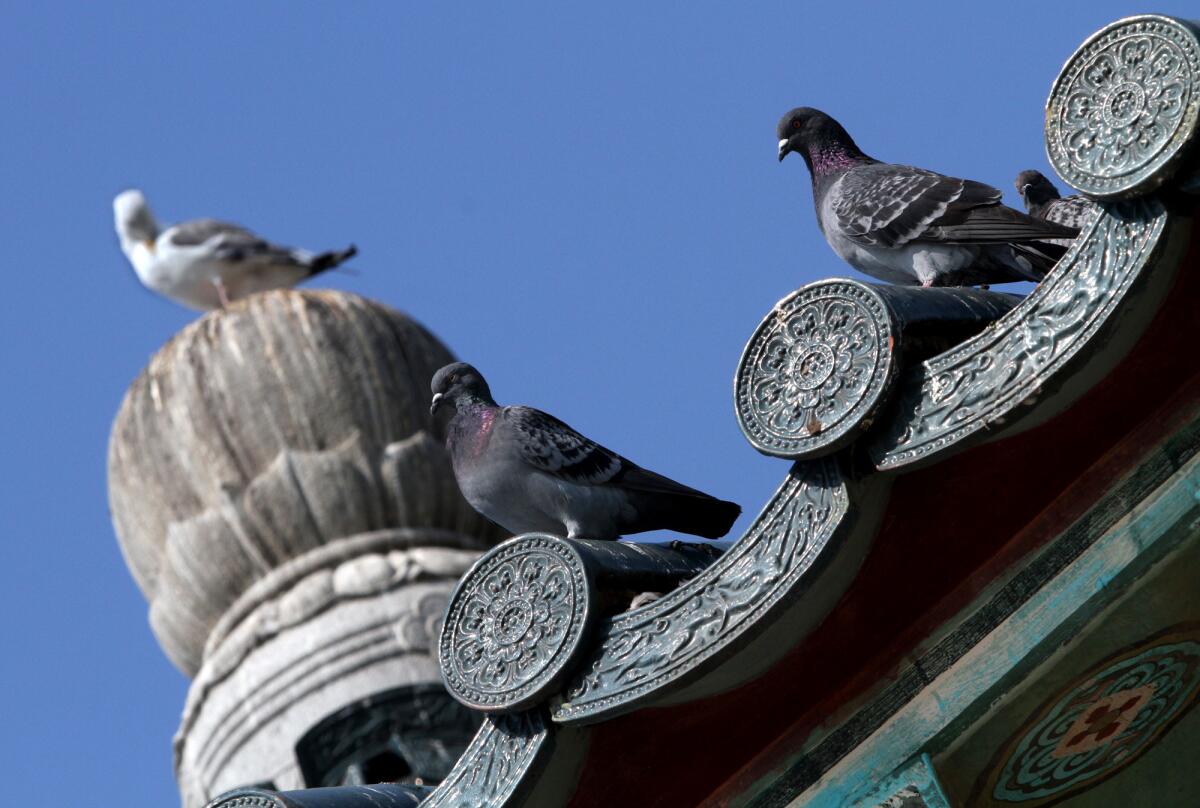
Bird excrement lined the belfry when restoration began. More photos
At the age of 72, Kim is the last living craftsman to work on the original project. It has fallen to Chai to repair his master's work.
Soon after Chai and his team arrived in San Pedro in August, they took hundreds of pictures of every square foot of the bell and belfry. They conducted tonal tests, tapping the bell with small mallets in a meticulous search for corrosion. Then, finally, they were set to begin.
For weeks, Chai and his team attended to each flower on the bell as concrete specialists mended the belfry. After a send-off dinner at the Korean consul general's house, the first set of bell masters flew home to South Korea with Chai. Then he flew back to Los Angeles with more supplies and a new set of artisans who would put the finishing touches on the bell and do the painting.
Chai has met each challenge with the same steady approach and demeanor. His work uniform seldom changes: a blue polo shirt with his company's namein gold lettering over the heart, washed-out jeans and worn brown boots. (He adds a jacket if he's meeting with a Korean official.) His hands are callused, and dirt hides under his fingernails even at formal events.
He speaks mostly in measured, diplomatic sentences and gesticulates to the cadence of his speech. He has a sense of humor, but even his jokes are half-serious.
"The biggest concern I have is that after I repair [the bell], the birds will come in and poop on it again," Chai says during a recent tour of the plaza.
Beom Jong Sa finished the job in late November, capping about 100 days of round-the-clock work.
Chai said his company approaches all its jobs with a dedication to quality, but acknowledges that this project meant something more.
The bell, he says simply, is "my child."
Follow Matt Stevens (@MattStevensLAT) on Twitter
Follow @latgreatreads on Twitter
More great reads
A healthcare navigator in unfriendly waters
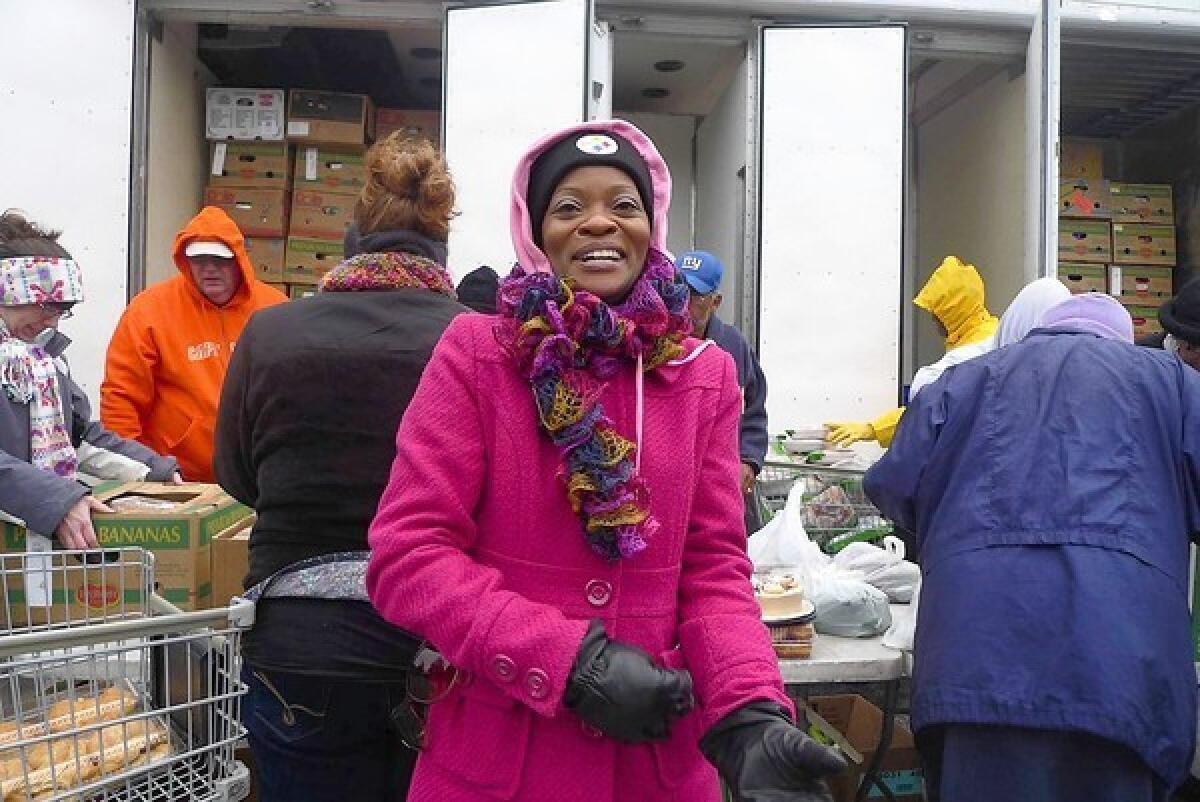
I don't feel that the law was designed for people to go sign up on a whim. It takes education."
Tiny museum in New York showcases the ordinary
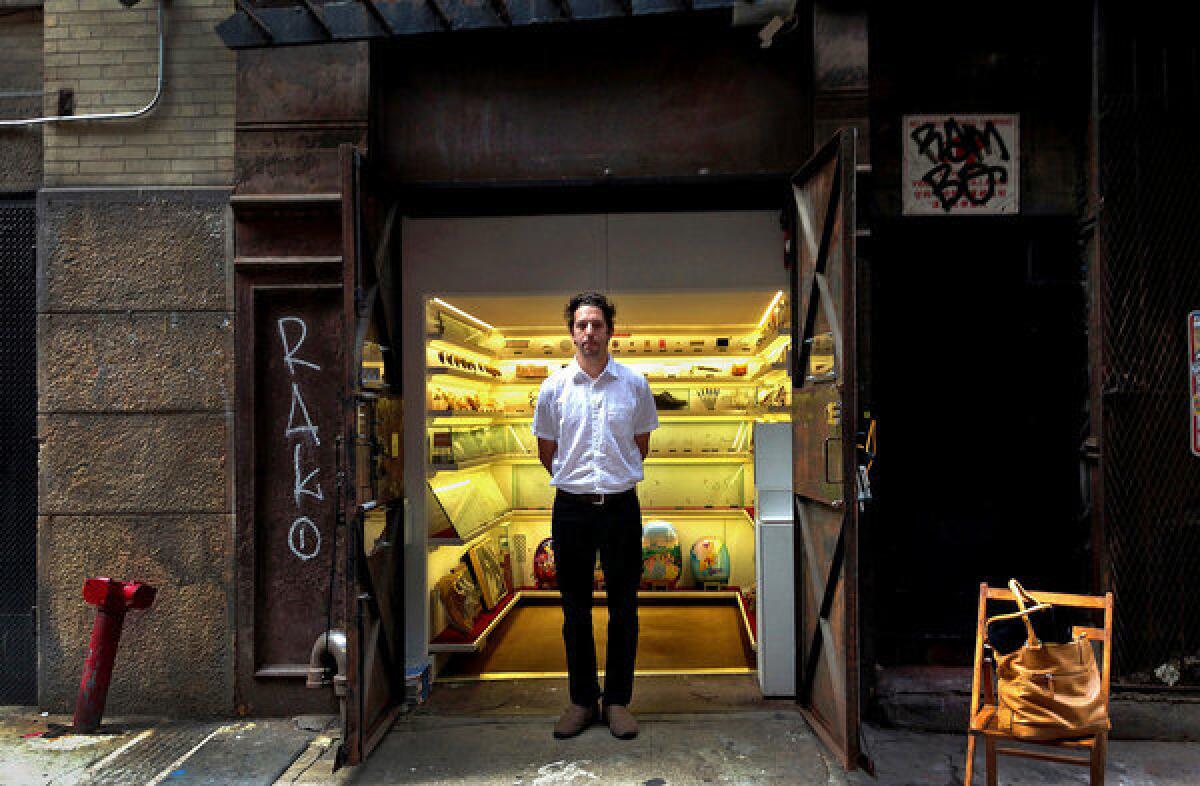
Sign up for Essential California
The most important California stories and recommendations in your inbox every morning.
You may occasionally receive promotional content from the Los Angeles Times.
